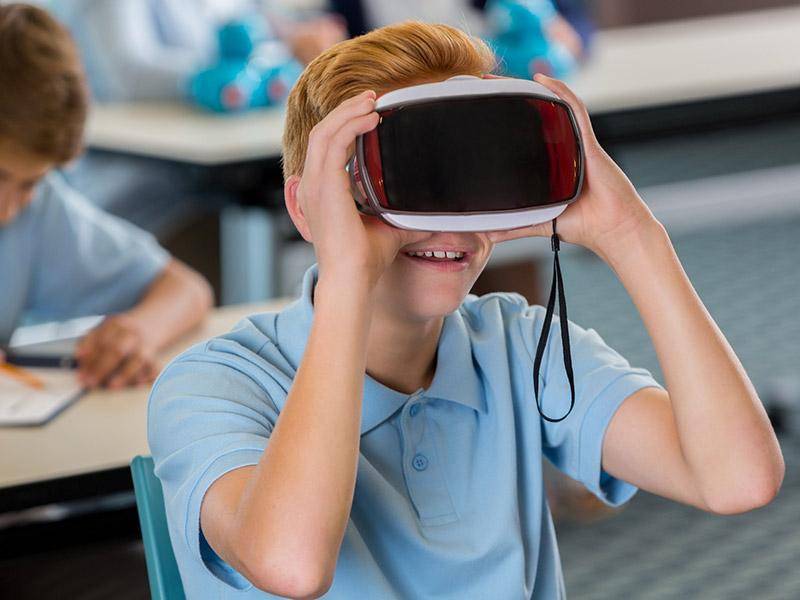
Higher education is characterized by a permanent change in the process of teaching learning, which dynamizes the technical and technological means by which the student appropriates the knowledge.
Thus, with the incorporation of Information and Communication Technologies (ICT) into classrooms, the paradigms regarding the form and transmission of knowledge have changed in the last two decades, and they tend to continue evolving towards omnipresence and ubiquity.
In addition to the technological models entrenched in education, there are emerging technologies that allow the creation of a diversity of innovations aimed at improving the teaching-learning process.
Under this scheme, many universities are adapting their curricula and teaching modalities towards the model of flexible hybrid learning; which combines the dynamics of face-to-face teaching with E-learning, M-learningy B-leaning, among other methodologies, either individually or in combination.
Learning sciences, ubiquitous learning, expanded education, open learning (related to open education), radical pedagogy, peeragogy, disruptive education, rhizomatic learning, deep learning (Buduma, 2017), design thinking, among others.
These teaching modalities have been positioning themselves in education at different levels and modalities, demonstrating their value by taking advantage of technological platforms such as the Internet as well as mobile communication systems.
A fundamental element of hybrid learning is the infrastructure where content, assessment, monitoring and interaction are managed and/or administered by the teacher for and by the student. In this type of scenario appears the learning management system (LMS) that goes hand in hand with the Content Management System (CMS), which acts as the basis or computer support for the LMS to work as expected.
Over time the LMS has been structured and changing as ICT evolves and educational needs also evolve, although not at their own pace, in which new functionalities and modalities have been integrated, such as Performance Management Systems (PMS) and Performance Management and Learning Systems (ERP).
It is worth mentioning that a variant of CMS is the Learning Content Management System (LCMS), which, unlike CMS, allows teachers to create their own content, making them participate dynamically in the teaching process.
In the case of CMS, this is accompanied by the Learning Management System (LMS), which is a software that is installed on the web server(s), which manages and / or administers the information and resources related to the activities of virtual learning, and therefore, users who are registered in it.
The particularity of this system is that it allows students to trace their learning, either in terms of the use of the system through interaction with it through the various ICT tools enabled and / or installed, such as:
Wikis, discussion forums and video conferences, to which is added the information that the teacher uploads to the system, such as PDFs, documents in Office format, presentations either directly on the system or directing towards a specific URL, links for consultations and downloads of extra-platform information, such as repositories in the cloud, consultation of videos via YouTube or equivalent, among others.
Of the levels of education that have benefited the most from hybrid learning are the university institutions, which have been exploring new niches in the academic market with excellent results inside and outside the classroom.

Creating flexible and dynamic educational models adapted to the needs of students and a technologically changing society, where ICT, internet, emerging technologies and mobile communications are its allies, becoming fundamental tools in the teaching-learning process, be it face-to-face, blended, distance or virtual.
Examples of this are: MOOCs, (Massive Open Online Course), artificial intelligence, mobile learning, next generation digital learning environments (NGDLE), augmented reality, adaptive learning technologies, the internet of things (IoT) and natural user interfaces.
These tools present different times of development and implementation in the educational environment, where some of them have already established a niche in the education market at different levels and modalities.
It is worth mentioning that MOOCs, as a result of emerging technologies, have evolved and are one of the most consolidated and used tools in the higher education environment, such as SPOC (Small Private Online Course) formats, which are MOOCs more adjusted to specific teaching needs, such as leveling or propaedeutic courses, therefore, they are not available to the general public, they are developed according to the needs of a particular institution.
There are the COOC (Corporate Open Online Course), which are courses designed by and for the organization itself, specifically for all or a group of employees, which can be extrapolated to a group of students to deal with specialized topics.
Similarly, flexible learning has incorporated other types of ICT tools already consolidated in the educational environment, such as others that are catalogued within the context of emerging technologies, whose implementation period fluctuates from a few months to several years.
These tools are: increased reality (georeality, informality and gameplay), virtual worlds (metaverses), learning through games (gamification), inverted class (Flipped Classroom), gestural interfaces, cloud computing, personal learning environments and video games, among many others.
With so many tools available to teachers, it is important to know whether they are sufficient to deal with problems common to education at its different levels and modalities, such as low academic performance and student dropout, which although normally linked to aspects of education, there are relationships with other external variables that influence it, for example, the sociocultural conditions of the student, economic problems, family and work, among others.
The answer to this is not conclusive, but everything seems to indicate that to a certain extent they help to improve the academic performance of the student, and therefore, desertion is going to be reduced.
On this matter, it is worth mentioning a study on the pertinence of the integration of ICT in the educational field, specifically, the role that higher education institutions must play in the face of the technological revolution of the digital era.
This study shows the importance of the rational use of ICTs, and the impact they have on the behavioural change of the educator and the learner.
A more recent study of more than 1,000 U.S. college students called the “Digital Study Trends Survey” developed by McGraw-Hill Education, where. says a large majority of college students think that digital learning technology benefits their school performance and helps them retain concepts that show which technologies best fit their needs.
Consequently, this information becomes a reference for other institutions that direct their efforts to work with ICT and other emerging technologies in their different university careers, adapting the digital tools according to the students’ own needs.
